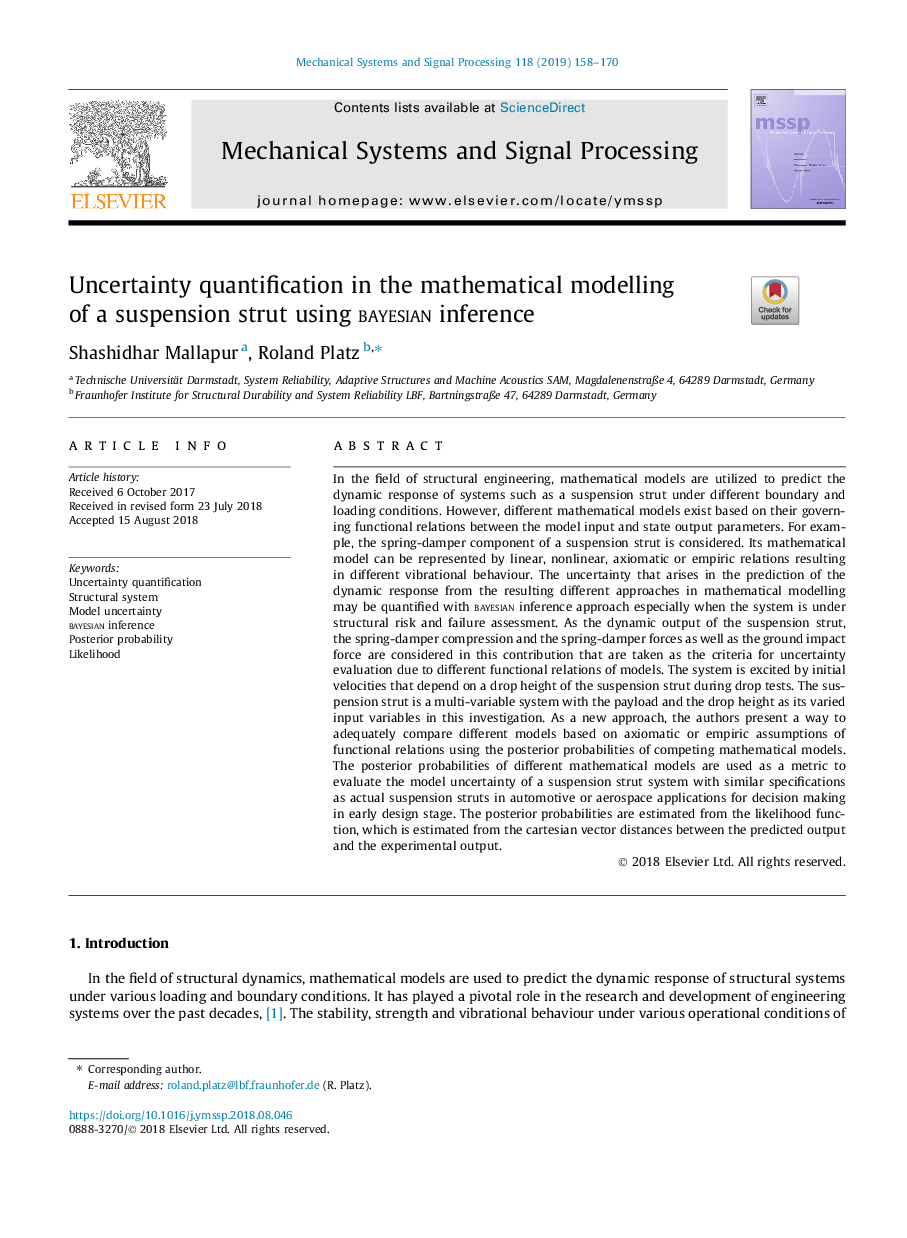| Article ID | Journal | Published Year | Pages | File Type |
|---|---|---|---|---|
| 10132808 | Mechanical Systems and Signal Processing | 2019 | 13 Pages |
Abstract
In the field of structural engineering, mathematical models are utilized to predict the dynamic response of systems such as a suspension strut under different boundary and loading conditions. However, different mathematical models exist based on their governing functional relations between the model input and state output parameters. For example, the spring-damper component of a suspension strut is considered. Its mathematical model can be represented by linear, nonlinear, axiomatic or empiric relations resulting in different vibrational behaviour. The uncertainty that arises in the prediction of the dynamic response from the resulting different approaches in mathematical modelling may be quantified with Bayesian inference approach especially when the system is under structural risk and failure assessment. As the dynamic output of the suspension strut, the spring-damper compression and the spring-damper forces as well as the ground impact force are considered in this contribution that are taken as the criteria for uncertainty evaluation due to different functional relations of models. The system is excited by initial velocities that depend on a drop height of the suspension strut during drop tests. The suspension strut is a multi-variable system with the payload and the drop height as its varied input variables in this investigation. As a new approach, the authors present a way to adequately compare different models based on axiomatic or empiric assumptions of functional relations using the posterior probabilities of competing mathematical models. The posterior probabilities of different mathematical models are used as a metric to evaluate the model uncertainty of a suspension strut system with similar specifications as actual suspension struts in automotive or aerospace applications for decision making in early design stage. The posterior probabilities are estimated from the likelihood function, which is estimated from the cartesian vector distances between the predicted output and the experimental output.
Keywords
Related Topics
Physical Sciences and Engineering
Computer Science
Signal Processing
Authors
Shashidhar Mallapur, Roland Platz,
